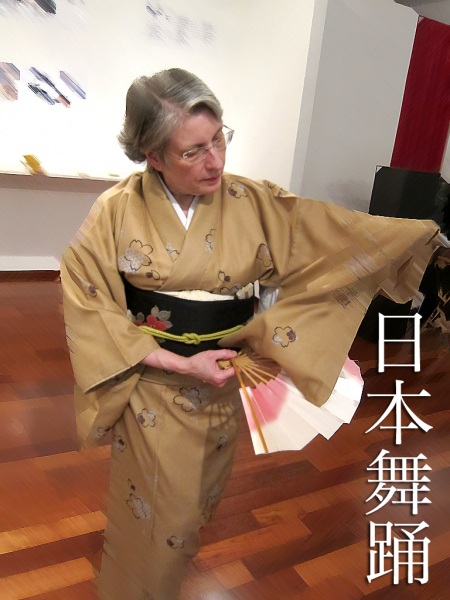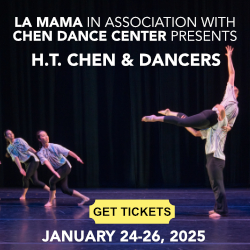August 25 - December 29, 2014
Japanese Classical Dance
 RESOBOX
RESOBOX
Japanese classical dance was born about 1603, along with the first performances of Kabuki Theatre. In Japanese, it is also called Nihon buyo or nichibu. Even today, all Kabuki actors must first learn to dance. You can study this style of dance, too, even if you are not Japanese.
In Japanese classical dance, the dancer interprets the poetry being sung in addition to dancing along with the music. For instance, if the words of the song say, “It was a very hot day,” the dancer might fan herself to show how hot it is, or if the words refer to a gentle breeze, the dancer’s movements themselves could become the cool breeze. Sometimes the dancer moves or stamps rhythmically to the music, too.
A fan (osensu) helps interpret the poetry by representing many things and illustrating many moods. Fans can be used completely closed, with one rib open, or fully opened.The kimono can be either leotard or costume; even its sleeves are used as part of dance. Myriad small hand props, such as an umbrella (kasa) or hand towel (tenugui), enhance the poetic meaning and the beauty of the scene.
Any dancer can successfully dance the part of a male or female character, since men and women customarily study both male and female styles. Male style is very open, with all energy directed outward – the feet are turned out, and the elbows are held out and away from the body to suggest masculinity and strength. Female style is just the opposite, but equally strong — the feet are turned slightly inward with knees held closely together, arms carried closer to the body, and the movements themselves are smaller, softer, and more feminine.
There are many styles or schools of Japanese classical dance.
The style of dance taught at (Resobox or Japanese Cultural Center) is the elegant SA?ke Fujima style.
RESOBOX
41-26 27th street
Long Island City, NY, 11101
7187843680
http://resobox.com/buyo/
Schedule
August 18, 2014: 8:00pm



